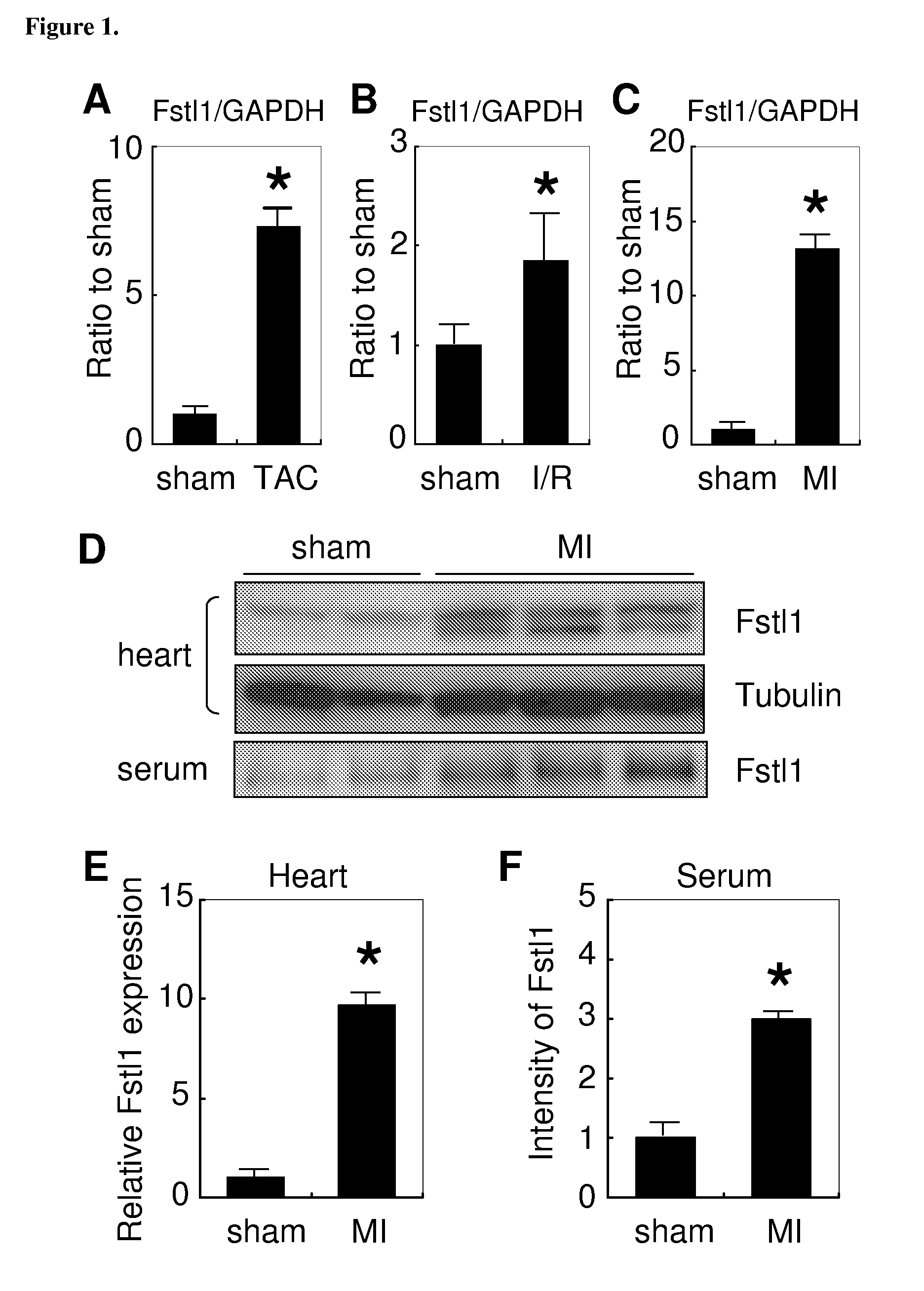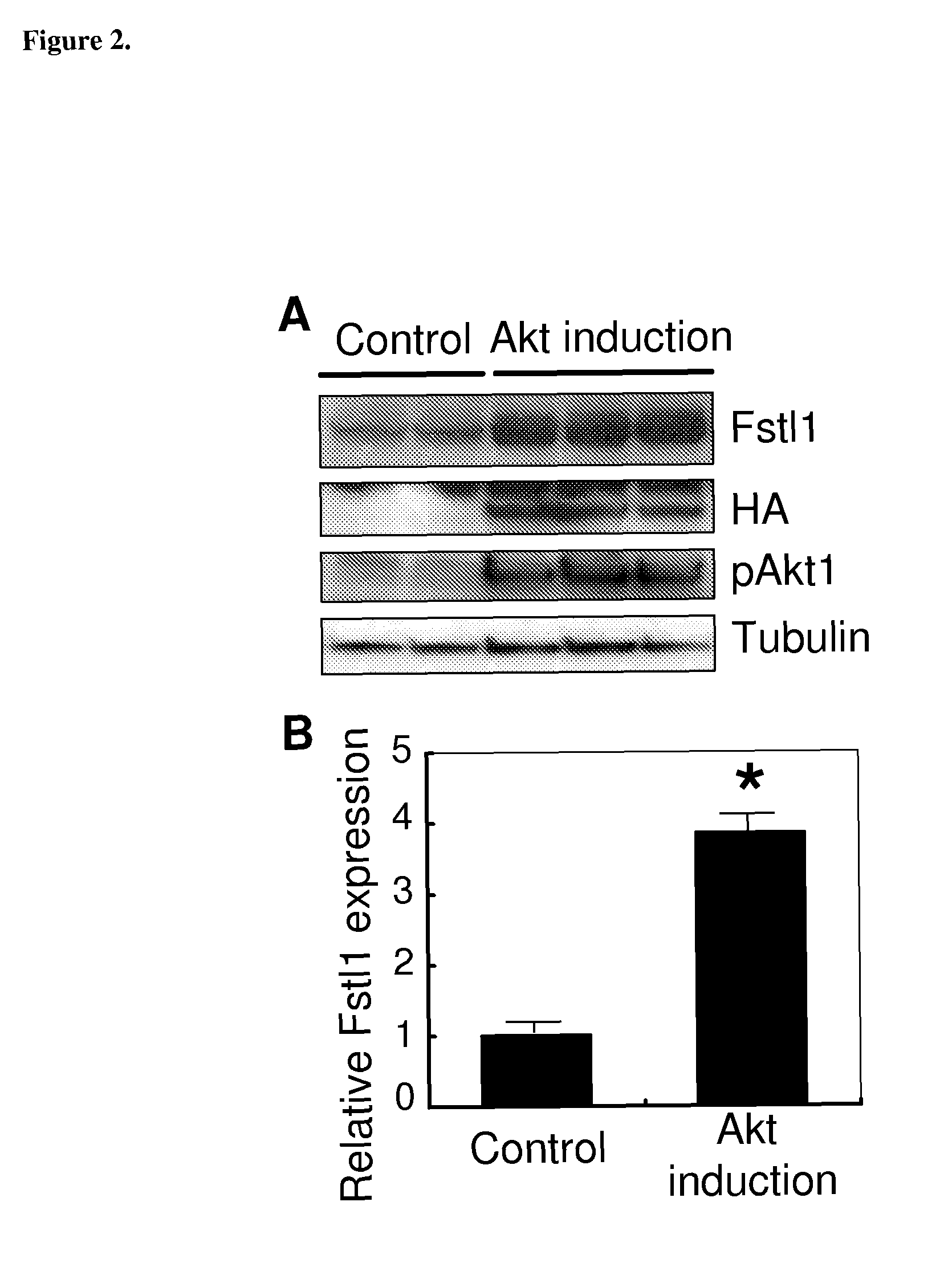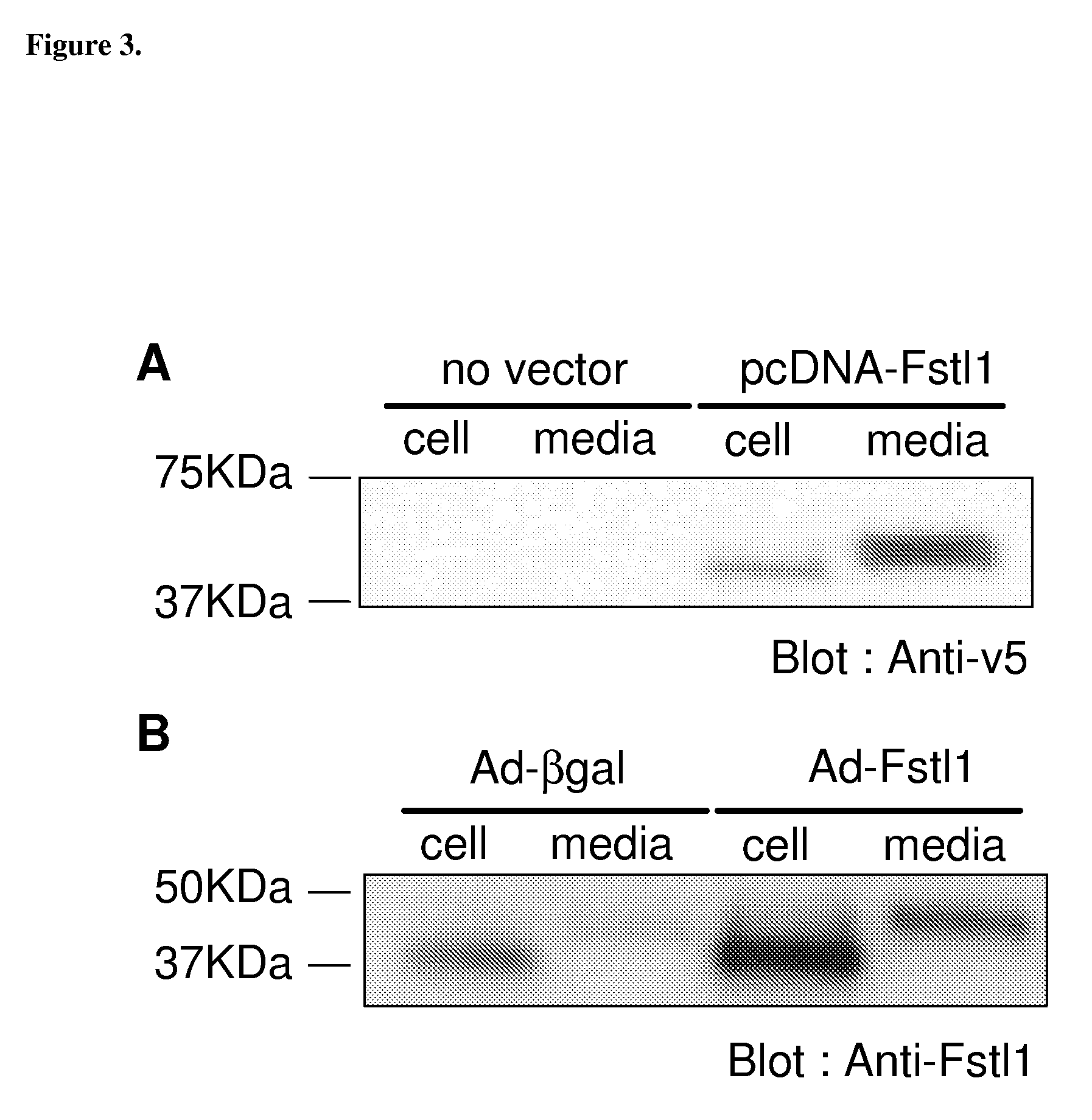Method of treating ischemic injury with follistatin-like 1 polypeptide
a polypeptide and ischemic injury technology, applied in the direction of peptide sources, antinoxious agents, metabolic disorders, etc., can solve the problems of diabetes, heart and blood vessel disease, stroke, blindness, etc., to protect the myocardium and treat or prevent cardiac damage
- Summary
- Abstract
- Description
- Claims
- Application Information
AI Technical Summary
Benefits of technology
Problems solved by technology
Method used
Image
Examples
example 1
FSTL-1 and Cardiac Ischemia / Reperfusion Injury
[0267]Using an inducible Akt1 transgenic mouse model, the inventors have found that Follistatin like-1 (Fstl-1) expression is significantly increased by Akt activation in skeletal muscle. Adenovirus-mediated overexpression of Fstl-1 (Ad-Fstl-1) activated AMPK signaling and induced PGC-1α and Glut4 expression in C2C12 skeletal muscle cell cultures and in mouse gastrocnemius muscle. To examine the effects of Fstl-1 on metabolism in vivo, Ad-Fstl-1 was delivered systemically to mice fed a high fat / high sucrose diet. Ad-Fstl-1 activated AMPK signaling in liver and reduced circulating levels of insulin. The delivery of Ad-Fstl-1 to obese ob / ob mice improved their response in a glucose tolerance test. These results indicate that Fstl-1 is a metabolic regulatory protein that is secreted from skeletal muscle. The Fstl-1 polypeptide and portions or derivatives thereof can have therapeutic utility for the treatment of diabetes and metabolic syndro...
example 1a
Fstl-1 Upregulation by Akt Activation in the Heart
[0269]Microarray gene expression analysis was compared between control mouse hearts and in hearts of mice two weeks after myocardial induction of myristoylated Akt (Schiekofer S, et al (2006), supra). Transcripts upregulated by 2 wks Akt activation with full-length open reading frame cDNAs were selected. amino acid sequences were then examined for signal sequences using Signal IP software. Transcripts with signal sequence were further analyzed with SOSUI signal beta version software to predict transcripts encoding a protein with a transmembrane domain. Akt-regulated transcripts were identified that contained a predicted signal sequence but lacked a transmembrane domain. Of this subset of proteins, follistatin like-1 (Fstl-1) was selected for further analysis. To confirm the changes in Fstl-1 mRNA level, QRT-PCR was performed using specific primer sets for Fstl-1 and normalizing the signal to that of GAPDH (Table 2). Fstl-1 was signif...
example 1b
Fstl-1 is a Secreted Protein that Activates Akt and Erk Signaling in Myocytes
[0272]Plasmid and adenovirus expression vectors were constructed to assess the functional significance of increased Fstl-1 expression in the heart. Using cDNA from Akt transgenic heart, mouse Fstl-1 was subcloned into the pcDNA3.1 / V5-His expression vector. The vector was transfected into HEK293 cells, and cells were incubated with serum free media for 24 hours. As shown in FIG. 3a, Fstl-1 was detected in the media indicating that it is a secreted protein.
[0273]To study Fstl-1 expression in cardiac myocytes, an adenoviral expression vector was constructed and tested. Neonatal rat ventricular cardiomyocytes (NRVCs) were transduced with Ad-Fstl-1 or Ad-βgal as a control. Recombinant Fstl-1 protein was detected in the cell pellet and the media as well as endogenous Fstl-1 as detected in cells transduced with Ad-βgal (FIG. 3b). As with the plasmid-encoded Fstl produced by HEK293 cells, the protein detected in th...
PUM
| Property | Measurement | Unit |
|---|---|---|
| thickness | aaaaa | aaaaa |
| body temperature | aaaaa | aaaaa |
| time | aaaaa | aaaaa |
Abstract
Description
Claims
Application Information
 Login to View More
Login to View More - R&D
- Intellectual Property
- Life Sciences
- Materials
- Tech Scout
- Unparalleled Data Quality
- Higher Quality Content
- 60% Fewer Hallucinations
Browse by: Latest US Patents, China's latest patents, Technical Efficacy Thesaurus, Application Domain, Technology Topic, Popular Technical Reports.
© 2025 PatSnap. All rights reserved.Legal|Privacy policy|Modern Slavery Act Transparency Statement|Sitemap|About US| Contact US: help@patsnap.com



